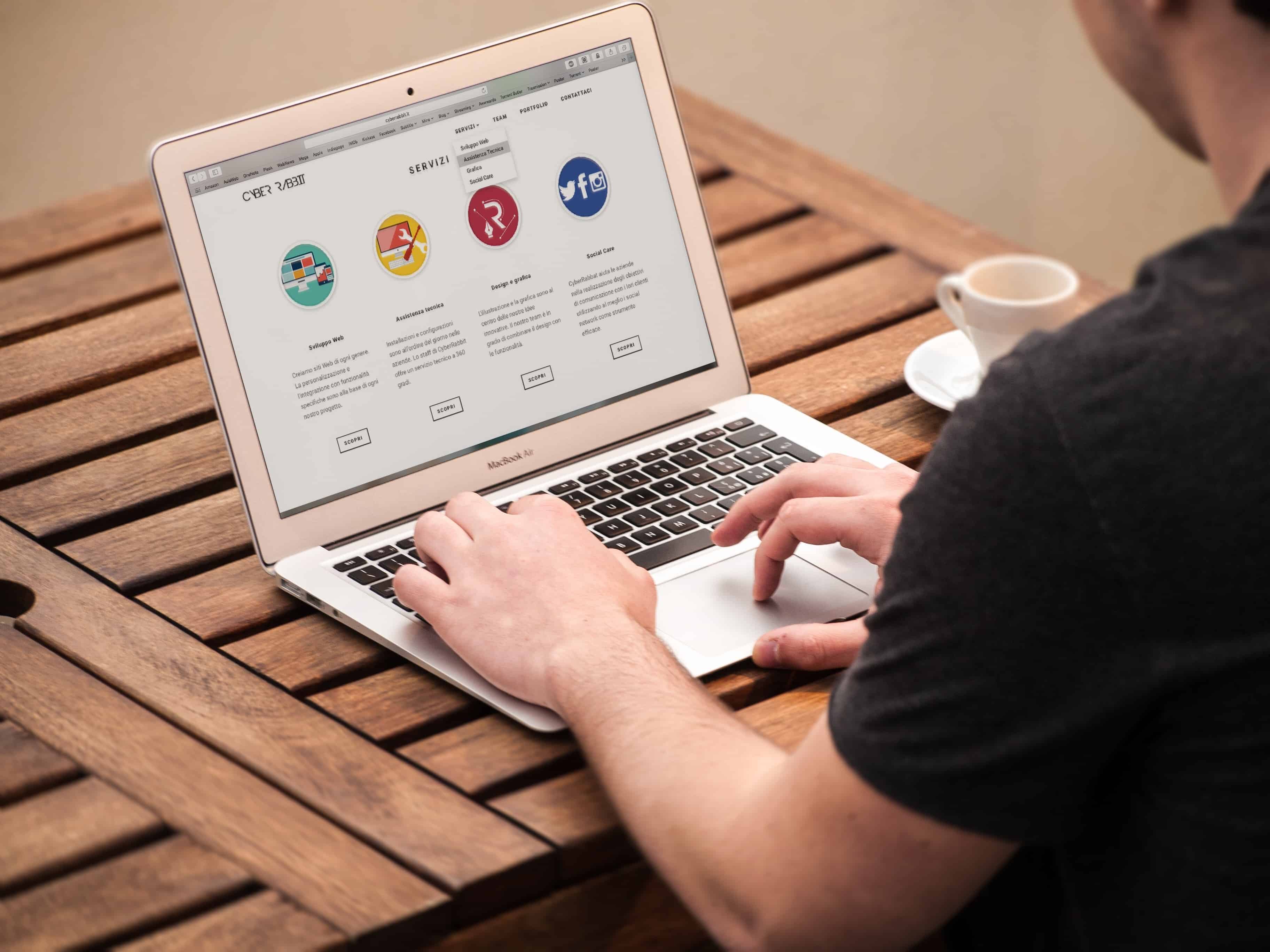The connected consumer’s journey happens in micro-moments, often starting with a website visit. But that’s just the beginning.
Today’s buyer is highly discerning, and we all know that website visits don’t always end in purchases. 97% of people visiting a site for the first time will leave without buying anything. It could be days, weeks, or even months until a consumer comes back, assuming they return at all. To stay in the game, these cursory website visits must turn into interactions that ultimately become sales. This is where retargeting comes in.
What is retargeting?
Retargeting is that extra push, a way of jogging the connected consumer’s memory in an accommodating and personal manner. Reminding website visitors about relevant products and services is a sure-fire way to increase sales and customer loyalty.
How does retargeting work and why is it useful?
Retargeting is a strategy that uses cookies, a small piece of data stored by the web browser, to identify consumers who have visited a site.
Because today’s buyer prioritizes feeling heard and understood by the brands they engage with, retargeting allows companies to really connect with their ideal consumers, and, in the process, demonstrate their authenticity. You can think about retargeting as a way to establish relationships with your clients by using positive and reflective engagement tools.
With that in mind, here are 20 proven ways to retarget ideal customers and increase brand loyalty.
- Demonstrate your brand’s value
Seek to educate, not market or sell. Companies that attempt to embrace and illuminate their prospective customers come across as genuine and unaffected. This is a way of letting your brand speak for itself.
Your value to your client is what must be promoted, without overwhelming or resorting to a heavy handed appeal.
- Personalize, personalize, personalize
What’s the difference between a helpful ad and an aggressive one? Personalization. Consumers only want to see content that’s relevant to their interests. This is the most important element of effective retargeting. From the customer’s perspective, the connection should feel like a one-on-one.
- Segmentation
Segmenting your audience allows for personalized retargeting. You can divide up your audience by behavior (e.g., how much time they are spending on your site and what they are looking at), how much time has passed since they last visited your site, and other relevant data, like purchase history.
- Add a burn pixel to stop ad redundancy
Burn pixels are tracking pixels that prevent consumers from seeing ads for products they have already purchased, an annoying occurrence you don’t want your customers to experience! You can embed this segment of code on your “thank you for purchasing” page.

- Create ads that focus on the customer’s unique pain points
Again, this goes back to personalization: How is your product going to improve your customer’s life? What are their specific pain points, and how can your brand solve them? Demonstrating your understanding is the key to getting repeat customers.
- Don’t underestimate the importance of timing
You want to get a consumer’s attention when they are most likely to make a purchase. Coordinate your retargeting, so you reach the buyer at the most optimal moment. The window is often a small one, as a purchaser’s attention and buying desires can be mercurial and fleeting. Remember, distraction is just a click away.
- Use sequential engagement
Sequenced retargeting creates a seamless brand experience. Not only does sequential engagement involve a variety of advertisements, it includes a variety of ad activities—click to learn more, click to purchase, click to ask a question. Sequenced ads should directly correspond with the point at which the consumer is in their journey.
- Highlight verified customer testimonials
Consumers want to know about other people’s experiences with your brand and product. Leverage customer testimonials that demonstrate your product’s exclusive benefits. Strong testimonials are a proven and essential retargeting tool that can lead to tremendous results.
- Demonstrate Google’s creative ABCDs
Google’s ABCDs of creative are as follows: Attention, Branding, Connection, and Direction. Use these to convey an emotional truth to your consumers.
- Utilize inbound marketing
Inbound marketing encompasses Google’s ABCDs and really makes the consumer the focal point. By focusing on the customer first, product second, companies leave a lasting impression on their prospects.
- Create evergreen content
Evergreen content is designed to withstand the test of time. Creating content that isn’t time-sensitive can help increase web traffic. Remember, evergreen content performs best when it includes SEO.
- Automate when appropriate
Marketing automation can streamline your retargeting workflow. Help your customers reach the right content by reviewing their purchase path. Create a set of journeys that allows for direct consumer engagement.
- Use funnel marketing
Funnel marketing outlines the customer journey from when they first learn about your brand (the “awareness” phase) to when they make a purchase (the “conversion” stage). This allows you to hone in on users who find your product relevant and are likely to convert. With funnel marketing, you can filter out uninterested customers early on and focus on the ideal clients with better alacrity and acumen.
- Find a relevant influencer
Consumers are assigning more and more power to influencers, sources they trust and admire. Influencers have the advantage of speaking directly to your ideal customers, allowing you to convey your message authentically and dynamically.
- Explore brand advocates
Similar to influencers, brand advocates are also a genuine way to retarget. Who’s a better source of information than the consumers who are already using your product? Brand advocates are credible and can take customer engagement to the next level. A brand advocate is like a heightened personal testimonial.
- Retarget current customers in addition to prospects
Your current customers need retargeting, too—for instance, email subscribers who haven’t engaged in a while. You can get their attention through upselling (more on this in a bit).
- Don’t inundate
The last thing you want to do is bombard customers with ads. Set an ad limit and stick to it. The majority of “unsubscribes” are from inbox overload.
- Change up your ads
Another way to combat ad fatigue is to rotate your advertisements. Consumers love when you give them variety and relevance.
- Utilize A/B Testing
A/B testing allows marketers to set up different versions of one campaign. From there, you see what resonates with your target audience. These changes don’t have to be huge: you can start with varying subject lines, send times, and so on.
- Try cross-selling and upselling
Retargeting through upselling and cross-selling benefits your brand’s image and can significantly increase revenue. When upselling, show consumers similar products from the ones they are already considering. Cross-selling, meanwhile, can encourage customers to purchase compatible products.
- Never stop testing and analyzing!
Frequently review your click-through-rates, view-through-rates, and other metrics to stay on top of your retargeting game.
Retargeting campaigns have proven to be one of the most effective ways to build brand awareness and increase conversion rates. The beauty of retargeting is that you’re reaching consumers who already have some level of interest in your product and services. So convey your brand’s truth, and the rest will fall into place.

Are you ready to talk about upping your retargeting efforts, or digital marketing efforts in general? We offer a wide array of marketing services, so contact us today to get started!




